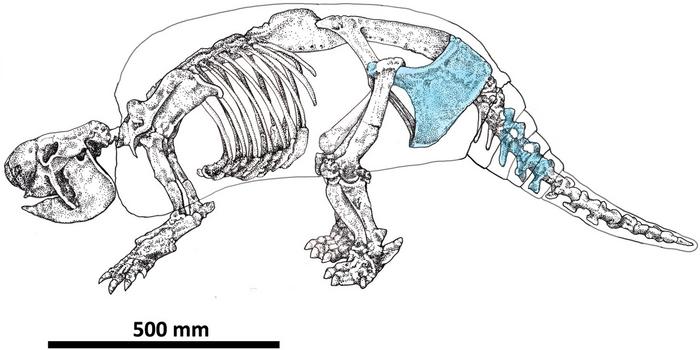The chopped-up carcass of a giant armadillo shows that humans were in South America much earlier than previously realized. Dating to around 21,000 years old, the butchered remains also show some of the earliest archaeological evidence of people in the southern stretches of the continent.
The fossilized bones were discovered along the banks of the Reconquista River, northeast of the Pampean region in modern-day Argentina. They belonged to a species of glyptodont, an extinct giant relative of armadillos, called Neosclerocalyptus that could grow up to 2 meters (6.5 feet) in length – and could apparently make for a generous meal.
Archaeologists at the National University of La Plata found distinctive cut marks around the pelvis, tail, and body armor made by the slicing and chopping of stone tools.
The Americas were once rich in megafauna (aka very large animals) that have since fallen into extinction, including giant ground sloths and a humongous form of llama. Plenty of evidence suggests that prehistoric humans hunted these giant beasts, raising the idea that overhunting was responsible for their extinction (typical humans, eh?).

Drawing of a Neosclerocalyptus skeleton highlighting cut-marked skeletal elements in light blue found on the specimen.
The dating of the new Neosclerocalyptus remains – between 21,090 and 20,811 years old – is especially significant. Recent decades have seen a huge amount of debate about when humans achieved the mammoth task of migrating from Eurasia into the Americas.
Conservative estimates suggest the first human peopling in the Americas began at least 16,000 years ago. However, a long reel of recent studies has pushed back this timeframe. One of the most incredible pieces of evidence comes in the form of human footprints in New Mexico that were imprinted sometime between 23,000 and 21,000 years ago. Some archaeologists contest this claim, but it was later reaffirmed by another study.
The recent discovery of the butchered armadillo affirms that the first humans arrived in the Americas well before 16,000 years ago. Furthermore, the evidence shows that human people had arrived in southern South America long before this too.
The current consensus says that humans first set foot in the Americas after migrating from Siberia to present-day Alaska across Beringia, a land bridge that existed during the last Ice Age when sea levels were significantly lower. Numerous waves of migration likely occurred and, over the millennia, some of these groups started to trek further south, eventually settling as far as southern South America thousands upon thousands of kilometers away from Beringia.
Archaeologists and anthropologists are still trying to piece together this epic story, and the latest discovery of butchering along the Reconquista River will certainly add to the debate.
“The study’s evidence puts into question the time frame for the first human peopling of the Americas 16,000 years ago,” Miguel Delgado, the corresponding author, said in a statement.
The new study is published in the journal PLOS ONE.
Source Link: Butchered Giant Armadillo Shows Humans Were In South America 21,000 Years Ago